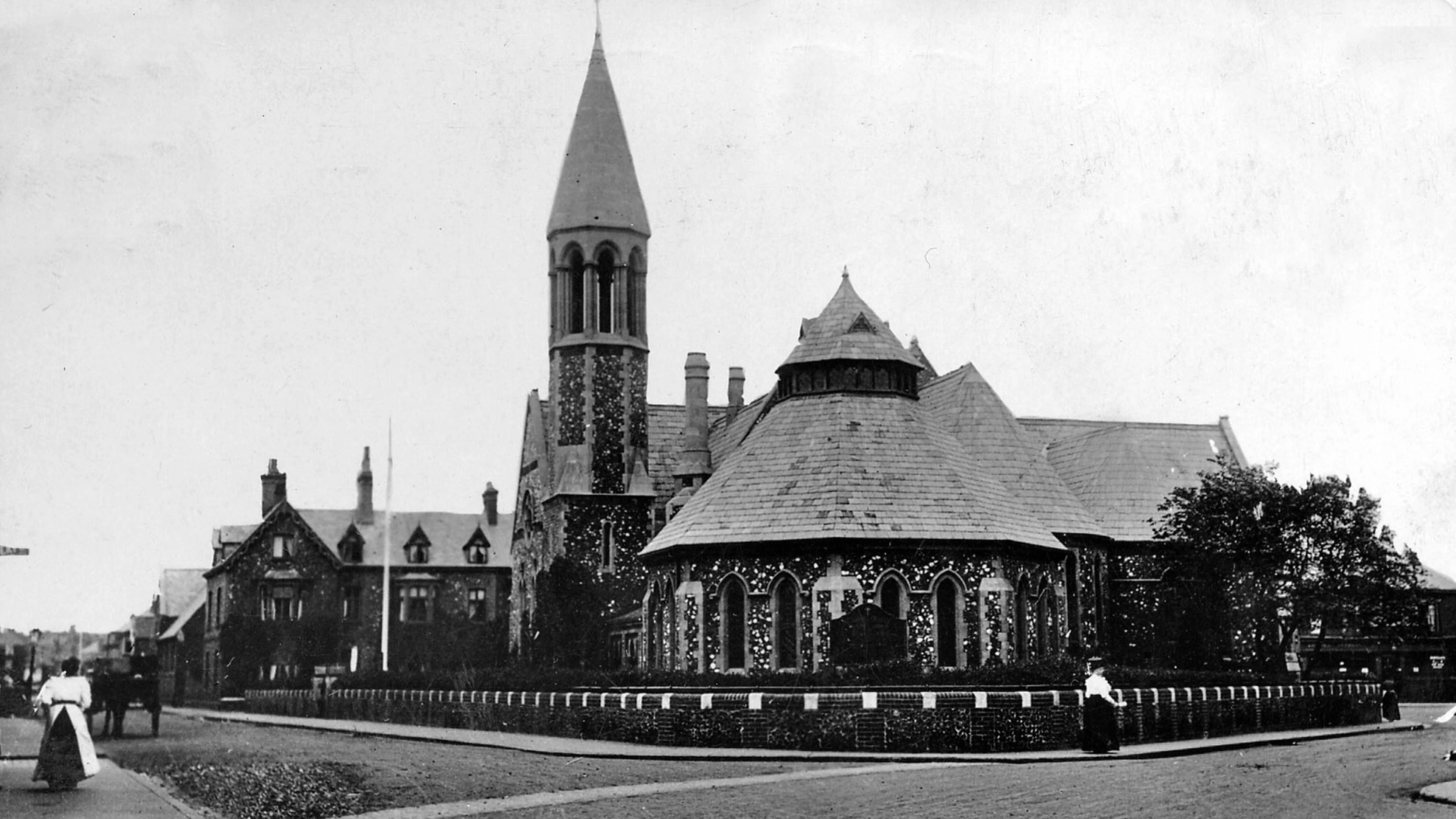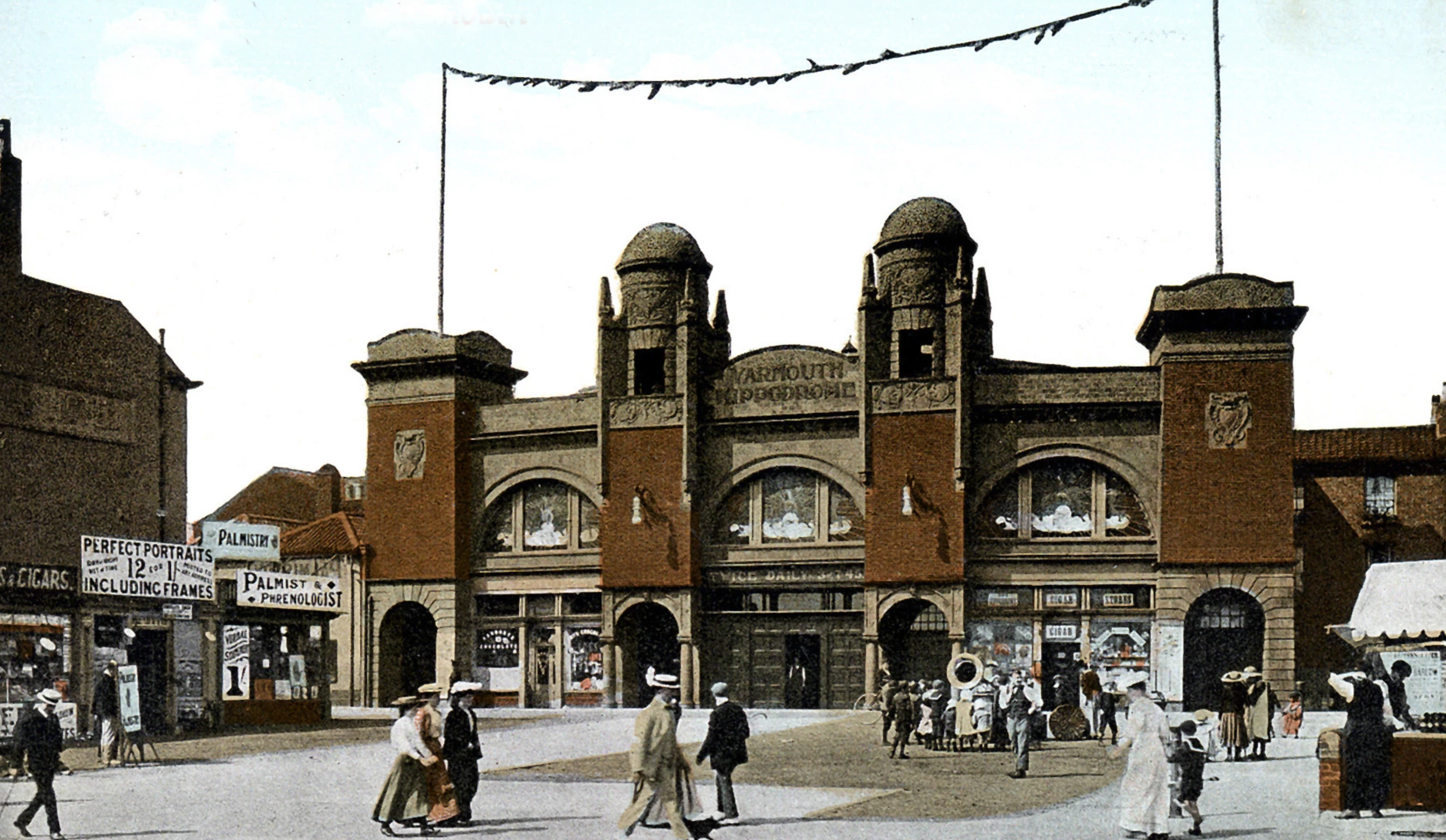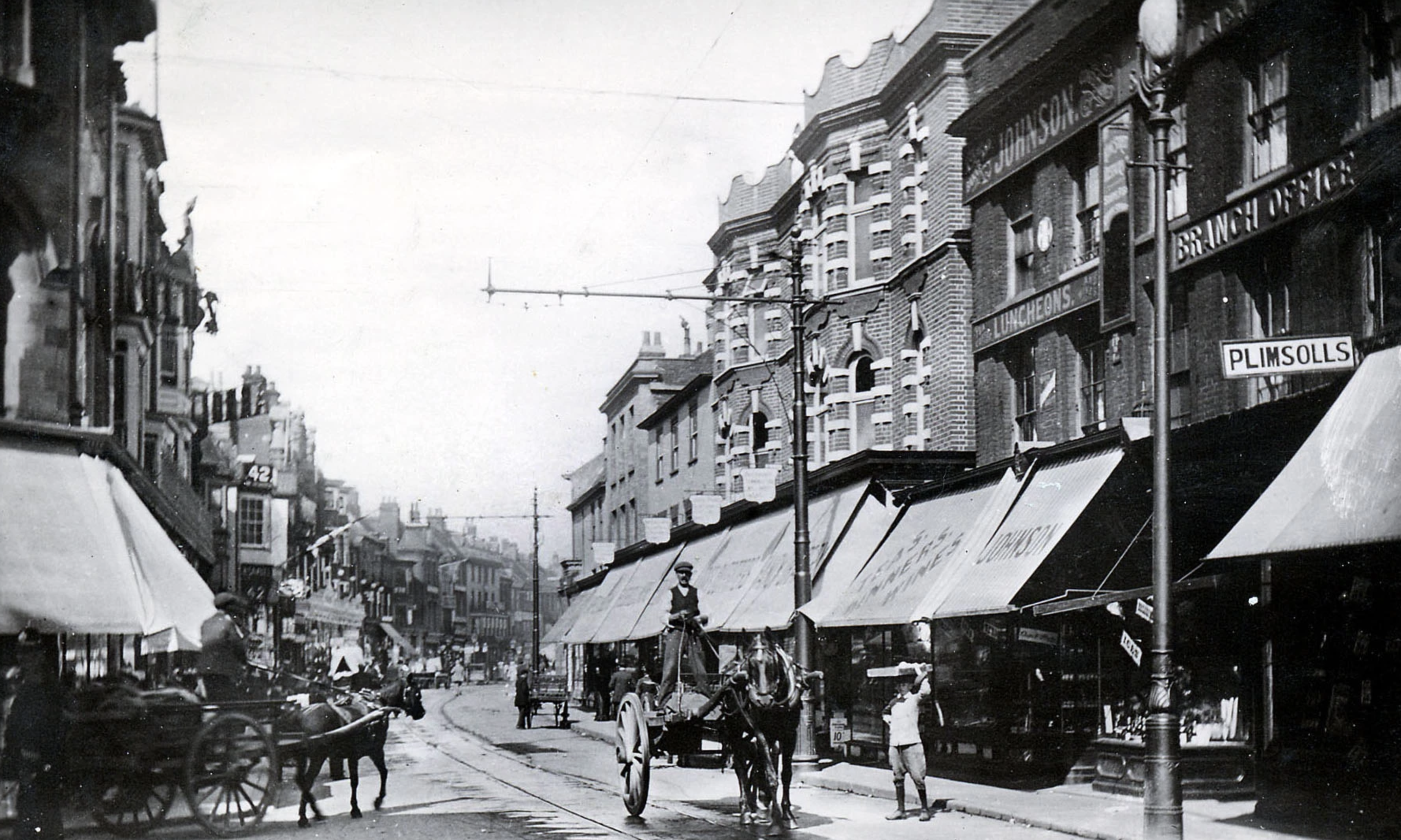Aquarium (Royal)

In October 1875, on the site of the old Town Battery, the foundation stone of a much vaunted addition to Great Yarmouth’s holiday attractions was laid; that of the Aquarium. Its position, just north of the entrance to Britannia Pier, facing south along Marine Parade, advertised the fact that the then Council viewed it as the northern limit of such attractions, although it was a privately funded venture.
The original grandiose plans for an ornate, two-storied venture fronted by a winter garden were severely curtailed due to inadequate funds; a single storey with a flat roof was built, the interior housing aquaria for fish and other water-living creatures and the roof being a roller skating/ice skating rink with a small stage for open air performances. Inside, there was space for billiards, reading rooms and dining rooms. Lectures, concerts and other entertainments could be held.
An early attraction was a demonstration of electric lighting, on Boxing Day 1878, although the town could not benefit from this invention until 1894. In 1881, the company running the Aquarium was bankrupt, due to inadequate support. It was sold and the new owners undertook substantial rebuilding, including its present façade, and it was re-opened in 1883 as the Royal Aquarium, since the Prince of Wales had attended the earlier venue. It was now an all-year attraction, predominately a theatre, although some of the original, smaller aquaria were retained, and it had a Grand Hall, a Minor Hall and refreshment rooms serviced by kitchens, that extended under Euston Road to the north of the building.
All types of theatrical performances, many by touring companies, continued until 1939, except for the years 1914 to 1919, when it was used by the military.
During the late 19th and early 20th centuries, the owner was John Nightingale, whose family owned a number of other town venues. He enhanced the catering facilities greatly and played an important role as liaison with the Bass Brewery of Burton-upon-Trent, whose entire workforce visited the town every fourth year from 1893 to 1913.
Following the re-opening, the variety of presentations was extensive, including dramas, operas, concerts, variety shows, lectures, circuses, political meetings and demonstrations lectures, which included those by Oscar Wilde and Ernest Shackleton and, in 1890, there was the first local demonstration of Edison’s Phonograph. The Prince of Wales was a regular visitor when staying at Shadingfield Lodge in his role as Honorary Colonel of the Norfolk Artillery Militia and, in 1887, a ball was held in his honour in the Minor Hall. Between 1904 and 1909, films made brief appearances as interludes in live shows, but were not popular, so they did not reappear until 1931.
John Nightingale died in 1911, so when the theatre re-opened after the First World War, catering was not restarted. From 1931, when talking pictures were shown, these were presented alternating with live theatre in the Grand Hall, while, in 1934, the Minor Hall became the Little Theatre. Outside this part of the premises was the only privately owned lamp standard on a public footpath. It had originally been gas powered, but was converted to electricity in the early 1900s and survived until it was hit by a car in 2005. From 1935 to its closure during the Second World War, the only live shows in the Grand Hall were Summer Sunday Concerts featuring show bands and radio personalities. Films predominated from 1948 to 1954, but in that year, when fire destroyed the Britannia Pier Theatre, its summer show moved to the Royal Aquarium. From then, until 1967, summer shows featured stars of radio and television, such as Al Read, Lonnie Donegan, Helen Shapiro, Billy Fury and Gerry and the Pacemakers, while from 1984 to 1993, when the Jay family owned the venue, live shows ran each summer, but from 1970 onwards, it was predominately a cinema. From 1970 to 1972, it had two screens with, first a fun-pub (the Stars and Garters) and, then, a nightclub (Studio 8, later Rosie O’Grady’s) also functioning as part of the building. From 1972, the complex was known as the ‘Three in One’; from 1982, as the ‘Royalty’ and, since 1993, when it housed only cinemas, eventually with five screens, as the ‘Hollywood’.



